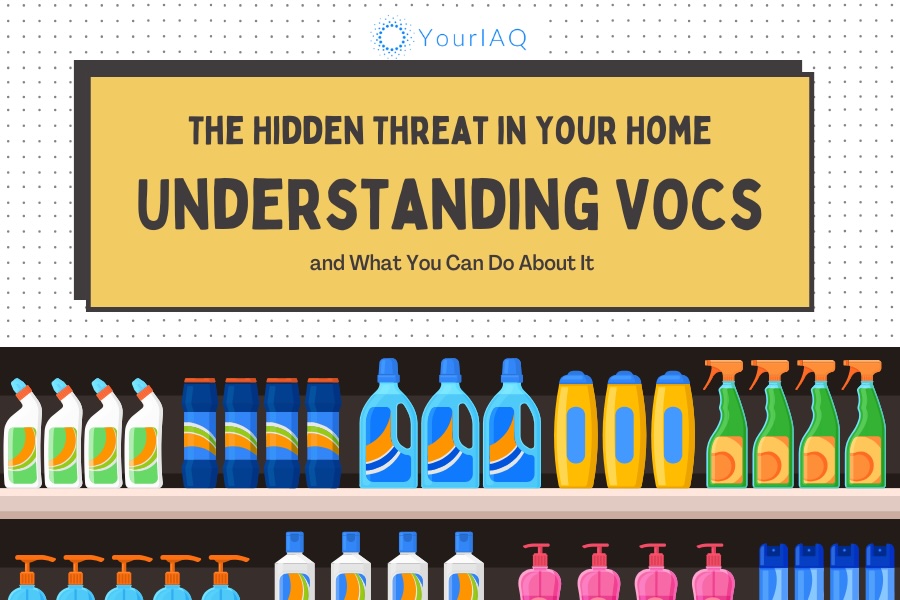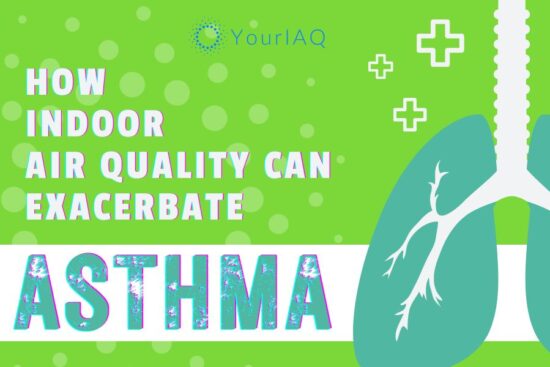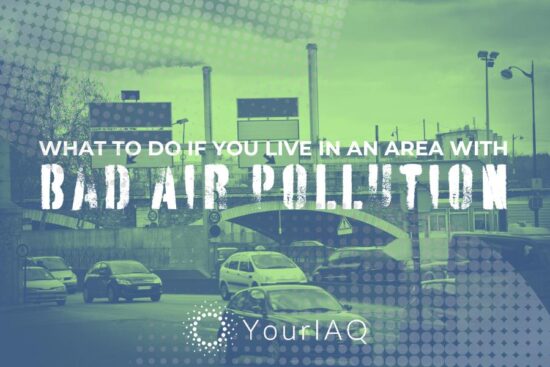
Ever walk into a freshly painted room and get hit with that chemical smell? Those are VOCs, Volatile Organic Compounds, lurking in the air, but they’re not just in new paint. From furniture to cleaning products, even your beloved houseplants, VOCs hang out in our homes, impacting indoor air quality and potentially our health.
But taking control doesn’t require drastic measures. Before you throw out everything and sleep outside (not recommended!), let’s delve deeper into the world of VOCs and explore actionable tips to create a healthier haven.
The benefits go far beyond simply reducing a stuffy nose.
Know Your Enemy: Demystifying VOCs
So, what exactly are these VOCs?
VOCs stand for Volatile Organic Compounds. They’re organic chemicals, meaning they contain carbon that evaporates at room temperature. Think of them as tiny, enthusiastic molecules flitting around your home, emanating from a surprising variety of sources, including:
- Building materials: New carpets, flooring, and furniture, especially those made with pressed wood or plywood, can be major VOC emitters.
- Paints and finishes: Oil-based paints and varnishes have high VOC content, while water-based options are generally lower. Be wary of freshly painted rooms and allow them to air out properly.
- Cleaning products: Many household cleaners, air fresheners, and even laundry detergents emit VOCs. Look for ones labeled “low-VOC” or “fragrance-free.”
- Personal care products: Hairsprays, perfumes, and other personal care products often contain VOCs. Apply them in well-ventilated areas and consider natural alternatives.
While low levels of VOCs are generally considered harmless, their concentrations can build up in enclosed spaces, especially with poor ventilation. It’s when these levels become high that the trouble begins, potentially linking to chronic health problems in some cases.
For instance, a recent study conducted on office workers found a significant correlation between higher levels of VOCs, particularly toluene and n-butyl alcohol, and the prevalence of Sick Building Syndrome (SBS) symptoms like headaches, dizziness, eye irritation, and respiratory problems. The study revealed that the risk of headaches nearly doubled in offices with the highest VOC levels compared to those with the lowest.
This isn’t an isolated case, as the World Health Organization estimates that indoor air pollution and ambient air pollution contribute to a staggering 3.8 million premature deaths annually. Beyond immediate discomfort, chronic exposure to high VOC concentrations may also elevate the risk of cancer, developmental issues in children, and even cognitive decline.
While further research is necessary to fully understand the long-term consequences, the existing evidence highlights the importance of reducing VOC levels in our indoor environments for our health and well-being.
4 Ways to Reduce VOCs in Your Indoor Air
Ready to ditch the stuffy nose and unlock a world of clearer thinking and deeper breaths? Let’s kick those pesky VOCs to the curb and transform your home into a haven of healthy air with these 4 simple hacks:
1. Ventilation Hacks for Happy Air
Okay, now that you know where the party’s happening, let’s kick those VOCs out! The simplest, most effective weapon? Fresh air. Open those windows, throw open the doors, and let the natural ventilation work its magic. Cross-breezes are your new best friends.
Of course, weather or location might not always allow for a constant open-window policy. That’s where your trusty allies, exhaust fans, come in. Use them in kitchens and bathrooms to whisk away VOC-laden air after cooking or showering.
For a more high-tech approach, consider an air purifier with activated carbon filters specifically designed to trap VOCs. These specialized filters act like tiny sponges, effectively trapping chemical pollutants as air passes through.
Pro tip: Activated carbon filters require periodic replacements to maintain optimal performance. Choose an air purifier with readily available and affordable replacement filters.
2. Choose Low-VOC Products
As you might have always heard, ‘Prevention is key’!
When shopping for furniture, paints, and cleaning products, keep your VOC radar on high alert. Look for products labeled “low-VOC” or “GREENGUARD Certified,” which indicates they meet strict emissions standards.
| What does GREENGUARD Certified mean?
GREENGUARD-certified product means that it has been independently tested by UL, a global safety science company, for over 10,000 chemicals known to be of concern indoors. It meets stringent limits for emissions of volatile organic compounds (VOCs), formaldehyde, and other potentially harmful pollutants. |
Water-based paints are generally lower in VOCs than oil-based options. Opt for solid wood furniture over pressed wood, and choose natural cleaning products whenever possible. Every little bit helps!
3. DIY Detox: Nature’s VOC-Battling Solutions
Do you want to get crafty and fight VOCs at the same time? You’re in luck! Nature has provided some amazing, low-cost solutions:
- Houseplants to the rescue: Bring in the green brigade! Peace lilies, snake plants, and spider plants are air-purifying champs, soaking up VOCs like thirsty sponges. Just remember, some plants themselves emit VOCs, so do your research before inviting them in.
- Charcoal’s magic touch: Activated charcoal is a natural VOC magnet. Fill fabric bags with activated charcoal and place them around your home to passively absorb airborne chemicals.
- The vinegar trick: Boiling a pot of water with vinegar helps neutralize odorous VOCs. Be careful not to breathe in the steam directly, though.
4. Call in the Pros
While most VOC issues can be tackled with smart choices and DIY solutions, sometimes more specialized help is needed.
If you have specific concerns about VOC levels in your home, consider consulting an indoor air quality (IAQ) professional. They conduct air testing and recommend additional strategies if needed, such as:
- Sealing or encapsulating sources of VOCs: This involves sealing off crawl spaces, encapsulating asbestos-containing materials, or applying special coatings to certain building materials.
- Professional ventilation systems: In complex cases, installing dedicated ventilation systems with advanced filtration may be necessary to effectively remove stubborn VOCs and pollutants.
- Continuous monitoring and remediation: For severe cases or heightened concerns, IAQ professionals set up continuous monitoring systems and implement advanced remediation techniques to ensure long-term control of VOC levels.
There’s no shame in seeking expert help. IAQ professionals provide invaluable guidance and ensure you’re taking the most effective steps to improve your indoor air quality.
Building a Legacy of Clean Air: Beyond Your Walls
The benefits of clean indoor air extend far beyond your individual health and well-being. By taking steps to reduce VOCs and improve indoor air quality, you’re contributing to a wider impact:
- Reduced healthcare costs: By creating a healthier environment in your home, you’re potentially reducing the risk of health problems for you and your family, which can translate to lower healthcare costs down the line.
- Boosting productivity and economic growth: Improved indoor air quality in workplaces can lead to increased employee productivity and well-being, contributing to a stronger economy.
- Lowering insurance premiums: A healthier population puts less strain on healthcare systems, which can lead to lower insurance premiums for everyone.
- Protecting vulnerable populations: Children, the elderly, and individuals with existing health conditions are particularly susceptible to the negative effects of poor indoor air quality. Taking steps to improve indoor air quality can create a safer and healthier environment for everyone.
- Preserving your investments: Good indoor air quality helps protect your home from damage caused by mold, wood rot, and other pollutants, preserving your valuable investment for years to come.
- Preparing for the future: With more frequent extreme weather events, having a safe haven with clean air becomes increasingly important. Investing in good indoor air quality can help you better prepare for future challenges.
Remember, the actions you take in your own home have ripple effects. By prioritizing clean air, you’re contributing to a healthier, more sustainable future for yourself, your community, and the planet.
See also: The Hidden Economic Benefits of Improving Indoor Air Quality
Frequently Asked Questions
How can I tell if my indoor air quality is bad?
Excessive VOC levels cause symptoms like headaches, dizziness, and respiratory irritation. If you experience these symptoms consistently, especially after moving into a new place or using new products, consider investing in an indoor air quality monitor or consulting a professional for testing.
Are all air purifiers effective against VOCs?
Not all air purifiers are created equal. Look for options equipped with activated carbon filters specifically designed to capture VOCs.
Can houseplants actually worsen indoor air quality?
While many plants act as natural air purifiers, some, like lilies and cycads, emit VOCs themselves. Research specific plants before welcoming them into your home.
Is it safe to use essential oils to eliminate VOCs?
While essential oils possess natural fragrances, they themselves contain VOCs. Opt for natural ventilation or low-VOC aromatherapy diffusers as alternative solutions.
Where can I learn more about VOCs and indoor air quality?
The Environmental Protection Agency (EPA), the American Lung Association, and YourIAQ website are excellent resources for reliable information and actionable tips on improving your indoor air quality.






